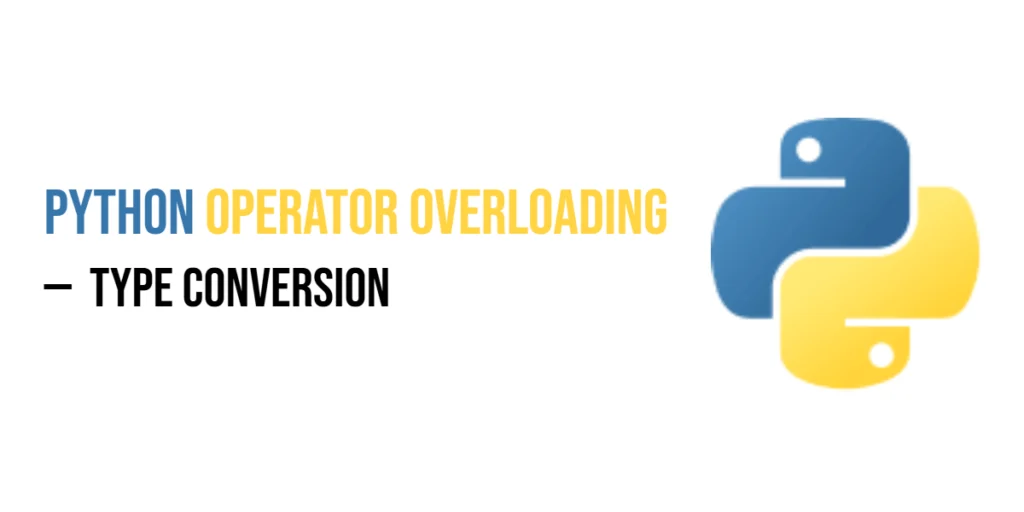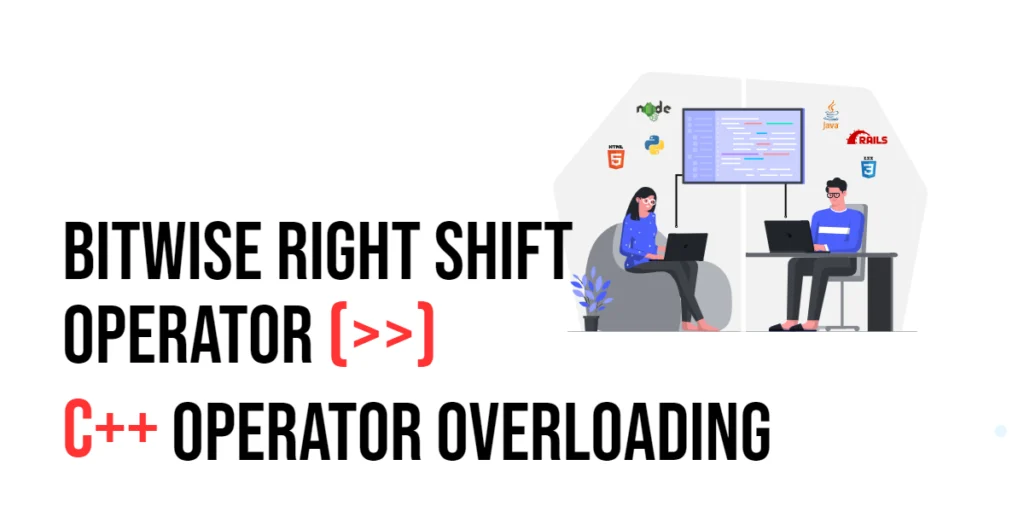Type conversion overloading in Python means making your custom classes work smoothly with built-in conversion functions like int(), float(), bool(), and str(). By defining special methods, you tell Python how to convert your objects to these basic types whenever needed.

with hands-on learning.
get the skills and confidence to land your next move.
This ability makes your objects behave more like built-in types, so you can use them naturally in expressions, print statements, or conditions. It helps your code feel clean and intuitive because users of your class don’t have to learn new methods to get simple conversions.
For example, imagine a Temperature class that holds a temperature value. With conversion methods, you can easily get an integer value for rounding, a float for precise calculations, or a string to display the temperature nicely. Or consider a Currency class that represents money—being able to convert it directly to int or float can help when you need whole amounts or decimals.
In this article, we’ll explore how to overload these conversion methods step-by-step with fun and realistic examples like Temperature and Currency classes.
Overloading int() with __int__
The __int__ method lets your class define how to convert an object to an integer using int(obj). This is useful when your object represents a value that can naturally be expressed as a whole number.
For example, a Currency class might store money as a float representing dollars and cents, but sometimes you want to get the total amount in whole cents or dollars as an integer. Defining __int__ makes this conversion easy and clean.
Here’s a simple example where the Currency class converts its amount to an integer number of cents:
class Currency:
def __init__(self, dollars):
self.dollars = dollars
def __int__(self):
# Convert dollars to whole cents as integer
return int(self.dollars * 100)
def __repr__(self):
return f"Currency(${self.dollars:.2f})"
# Example usage
price = Currency(12.75)
print(price) # Output: Currency($12.75)
print(int(price)) # Output: 1275 (cents)In this example, calling int(price) returns the amount in cents, turning the floating dollar value into a simple integer. This makes working with Currency objects intuitive whenever whole-number values are needed.
Overloading float() with __float__
The __float__ method allows your class to define how to convert an object to a floating-point number using float(obj). This is helpful when your object represents a quantity that naturally maps to a decimal value.
For example, a Temperature class might hold temperature values internally, and you want to convert it easily to a float representing the temperature in Celsius (or Fahrenheit) when needed.
Here’s an example where the Temperature class converts its value to a float in Celsius:
class Temperature:
def __init__(self, celsius):
self.celsius = celsius
def __float__(self):
# Return the temperature as a float in Celsius
return float(self.celsius)
def __repr__(self):
return f"Temperature({self.celsius}°C)"
# Example usage
temp = Temperature(36.6)
print(temp) # Output: Temperature(36.6°C)
print(float(temp)) # Output: 36.6In this example, calling float(temp) returns the numeric Celsius temperature as a float. This makes Temperature objects work smoothly when numeric operations or conversions require a floating-point number.
Overloading complex() with __complex__
The __complex__ method lets your object convert to a complex number using complex(obj). This is useful for classes that represent 2D points, vectors, or anything with two numeric components that fit well as the real and imaginary parts of a complex number.
For example, a Vector2D class can return its coordinates as a complex number, making math with complex numbers easy and natural.
Here’s a Vector2D example showing how to convert it to a complex number:
class Vector2D:
def __init__(self, x, y):
self.x = x
self.y = y
def __complex__(self):
# Return as complex number: x + yj
return complex(self.x, self.y)
def __repr__(self):
return f"Vector2D(x={self.x}, y={self.y})"
# Example usage
v = Vector2D(3, 4)
print(v) # Output: Vector2D(x=3, y=4)
print(complex(v)) # Output: (3+4j)In this example, calling complex(v) creates a complex number from the vector’s x and y coordinates. This makes Vector2D objects easy to use with Python’s built-in complex number operations.
Overloading bool() with __bool__
The __bool__ method controls how your object behaves in boolean contexts, like if obj: or while obj:. When Python checks the truthiness of your object, it calls __bool__. If you don’t define it, Python uses __len__ or defaults to True.
For a real-world example, an Inventory class might be considered False if it has no items, and True otherwise. This way, checking if inventory: directly tells you if it’s empty or not.
Here’s a simple Inventory example with __bool__:
class Inventory:
def __init__(self):
self.items = []
def add_item(self, item):
self.items.append(item)
def __bool__(self):
# Return True if inventory has any items, False if empty
return len(self.items) > 0
def __repr__(self):
return f"Inventory({self.items})"
# Example usage
inventory = Inventory()
print(bool(inventory)) # Output: False (empty)
inventory.add_item("apple")
print(bool(inventory)) # Output: True (not empty)
if inventory:
print("Inventory has items.")
else:
print("Inventory is empty.")In this example, bool(inventory) and if inventory: both check if the inventory holds any items, making your code cleaner and more intuitive.
Overloading str() with __str__
The __str__ method lets you control how your object converts to a human-friendly string when you use str(obj) or print(obj). This is perfect for showing clear, nicely formatted information about your object.
For example, a Currency class can display amounts with currency symbols and two decimal places, making the output easy to read and understand.
Here’s a Currency class demonstrating __str__:
class Currency:
def __init__(self, amount, currency="USD"):
self.amount = amount
self.currency = currency
def __str__(self):
return f"{self.currency} {self.amount:.2f}"
# Example usage
price = Currency(19.99)
print(price) # Output: USD 19.99
discount = Currency(5)
print(f"Discount: {discount}") # Output: Discount: USD 5.00With __str__, when you print your Currency object or convert it to a string, it shows a clean, readable format that makes sense to users and developers alike.
Overloading repr() with __repr__
The __repr__ method provides an unambiguous string representation of your object, mainly used for debugging and in the Python console. It should ideally show enough detail to recreate the object or understand its state clearly.
Unlike __str__, which focuses on user-friendly output, __repr__ is for developers who need precise info about the object.
Here’s a Temperature class showing both __repr__ and __str__ to highlight the difference:
class Temperature:
def __init__(self, celsius):
self.celsius = celsius
def __str__(self):
return f"{self.celsius}°C"
def __repr__(self):
return f"Temperature(celsius={self.celsius})"
# Example usage
temp = Temperature(23)
print(str(temp)) # Output: 23°C
print(repr(temp)) # Output: Temperature(celsius=23)
# In the interactive shell, typing temp will show:
# Temperature(celsius=23)As you see, str() gives a neat, readable string, while repr() shows detailed info, helping debugging or recreating the object. Both methods make your class easier to understand and use.
Overloading bytes() with __bytes__
The __bytes__ method lets your object convert naturally to bytes when you use bytes(obj). This is useful when you need a byte representation for encoding, saving to files, or sending data over a network.
For example, a Message class might store text but provide a bytes version for sending through a socket or writing to a binary file.
Here’s a simple Message class demonstrating __bytes__:
class Message:
def __init__(self, content):
self.content = content
def __bytes__(self):
# Convert the content string to bytes using UTF-8 encoding
return self.content.encode('utf-8')
def __str__(self):
return self.content
# Example usage
msg = Message("Hello, World!")
print(str(msg)) # Output: Hello, World!
print(bytes(msg)) # Output: b'Hello, World!'
# This bytes object can be sent over a network or saved to a binary fileWith __bytes__, your custom class easily integrates with Python features needing byte data, making it ready for real-world tasks like encoding and data transfer.
Temperature Class with Multiple Conversions
This example shows how to combine multiple type conversion methods in one class, making your Temperature objects easy and natural to use.
class Temperature:
def __init__(self, celsius):
self.celsius = celsius
def __int__(self):
# Return temperature rounded to nearest integer Celsius
return round(self.celsius)
def __float__(self):
# Return exact temperature as float Celsius
return float(self.celsius)
def __str__(self):
# Human-friendly formatted string with °C symbol
return f"{self.celsius:.1f}°C"
def __repr__(self):
# Unambiguous, detailed string for debugging
return f"Temperature(celsius={self.celsius})"
def __bool__(self):
# Temperature is True if valid number, False if None or NaN
return self.celsius is not None and not (self.celsius != self.celsius)
# Example usage
temp = Temperature(23.678)
print(int(temp)) # Output: 24 (rounded int)
print(float(temp)) # Output: 23.678 (exact float)
print(str(temp)) # Output: 23.7°C (friendly print)
print(repr(temp)) # Output: Temperature(celsius=23.678)
print(bool(temp)) # Output: True (valid temperature)
invalid_temp = Temperature(None)
print(bool(invalid_temp)) # Output: False (invalid temperature)By implementing these conversion methods, Temperature objects behave like built-in types in many contexts. You can easily convert them, print them, or use them in conditions, making your code cleaner and more intuitive.
Conclusion
Type conversion overloading allows your custom objects to act like built-in types, making them easier to work with in Python. By adding methods like __int__, __float__, __str__, and others, your classes fit naturally into Python’s type system and built-in functions. This seamless integration improves code readability and usability.
Try adding these conversion methods to your own classes to make them more powerful, flexible, and intuitive to use!







